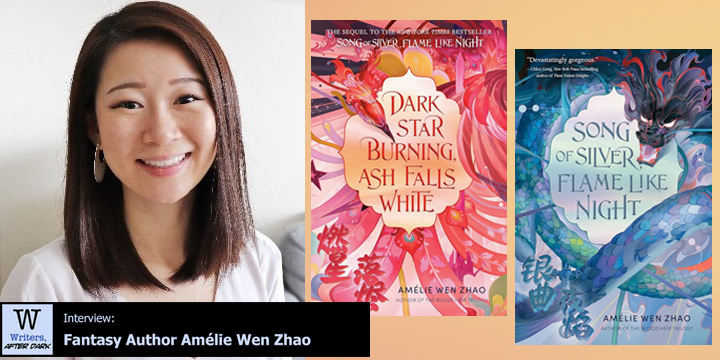The great thing about some trilogies is the ability to jump in in the middle and still not get lost. I had not read the first book in the “Thrones & Bones” series, Frostborn when I picked up Nightborn. And, while it definitely piqued my interest to go back and read the first book, I was not confused or lost having not read it.
Nightborn is the continuing adventure of Karn Knorludsen, a gamer from the north, who, in order to save his best friend, Thianna Frostborn, must travel to the far away city of Castlebriar on a search for a magic item: The Horn of Osius.
Along his travels, Karn meets the lovely dark elf Desstra, who is on a mission to join the Underhand, the official warriors of the dark elves. It turns out that Desstra is also on a mission to find the Horn of Osius, but her mission is one of deception and betrayal. Or is it?
What I liked about this book was it felt like the beginners guide to Tolkien or Martin. With many different kinds of races, elves, giants, humans, etc., and the making of friends to help make it on an epic journey through many kingdoms and places, Nightborn was a journey on a slightly easier reading scale than that of its high fantasy brethren.
While it doesn’t have the complexity or the language as that of Tolkien, I think Nightborn and the other “Thrones & Bones” books are an excellent introduction to the worlds of high fantasy. Unlike my favorite books, the Harry Potter series, Nightborn doesn’t exist in the same world that we live in. It’s a world in another time and place: a world of spells and dragons, swords and arrows.
But the meaning, as with the Potter books, is the same. You don’t have to do it alone – your friends are not only there to help, they want to help; they need to help.
I think out of all of the characters in the book, Desstra was my favorite. She truly undergoes a transformation during the course of the book. When we first she her, she, and a team of other dark elves, are in a competition to see who moves on to the next round, thereby qualifying them as ready to join the defenders of the Dark Elves, the Underhand. And yes, that name is definitely as forshadowy as you think.
By the end, I think Desstra has learned that getting what you want by any means necessary isn’t always the best way to go about achieving ones goals, especially if you have to betray those who have helped you in the long run.
What this book has in common with its grown companion, “A Song of Ice and Fire”, is that chapters are told in different character perspectives. It’s a tactic I actually like, since often seeing what’s happening through someone else’s point of view can really turn the tables and push the story forward in a way writing in the third person omniscient doesn’t.
Even if you enjoy the tougher books in the high fantasy genre, don’t discount a younger feeling series like “Thrones & Bones”. It’s more faced paced, and easier to read, so you can get through them a little faster. Which in my opinion, just means you get to read more and more books!
Official website: ThronesandBones.com
Karn Korlundsson is a gamer. Not a riddle solver. But in order to rescue his best friend, Thianna Frostborn, he will need to travel to the faraway city of Castlebriar (by wyvern), learn how to play a new board game called Charioteers (not a problem), decipher the Riddle of the Horn, and tangle with mysterious elves.
Meet Desstra. She’s in training to join the Underhand—the elite agents of the dark elves. When she crosses paths with Karn, she is not all that she appears to be.
Everyone is chasing after the horn of Osius, an ancient artifact with the power to change the world. The lengths to which Karn will go in the name of friendship will be sorely tested. Who knew that solving a riddle could be so deadly?
 Nightborn (Thrones and Bones Book 2) by Lou Anders
Nightborn (Thrones and Bones Book 2) by Lou Anders
Age Range: 8 – 12 years
Grade Level: 3 – 7
Series: Thrones and Bones
Hardcover: 368 pages
Publisher: Crown Books for Young Readers (July 14, 2015)
Language: English
ISBN-10: 038539036X
ISBN-13: 978-0385390361
"Nightborn" by Lou Anders
Summary
What this book has in common with its grown companion, “A Song of Ice and Fire”, is that chapters are told in different character perspectives. It’s a tactic I actually like, since often seeing what’s happening through someone else’s point of view can really turn the tables and push the story forward in a way writing in the third person omniscient doesn’t.
Even if you enjoy the tougher books in the high fantasy genre, don’t discount a younger feeling series like “Thrones & Bones”. It’s more faced paced, and easier to read, so you can get through them a little faster. Which in my opinion, just means you get to read more and more books!




